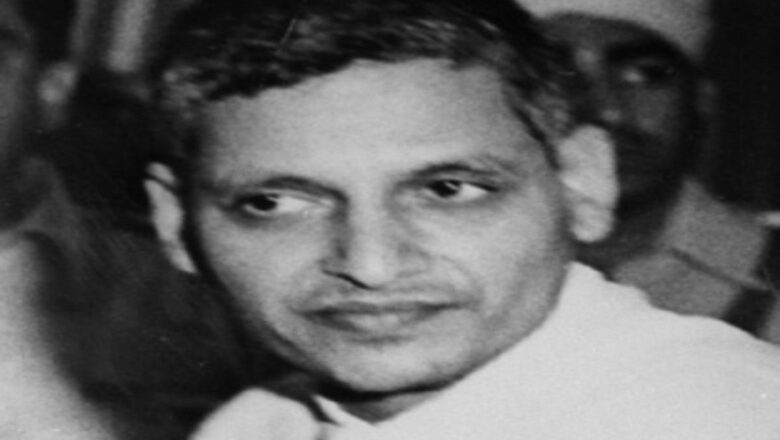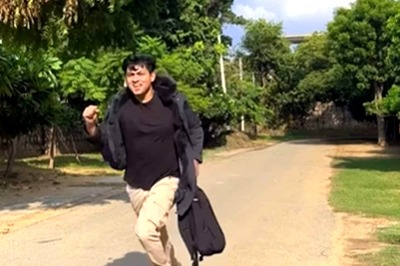
views
The demand for commuting Godse’s death sentence and abolishing capital punishment was strengthened with the speaker of the central legislative assembly, G.V. Mavalankar, throwing his weight behind it. “I do not feel reconciled to the idea that howsoever much we may abhor him, the murderer of Bapu should be killed on the gallows…I feel that capital punishment must be done away with,” he wrote to Rajagopalachari on June 27.
His concern was that awarding death sentences had not succeeded in reducing the incidence of crimes. “If we want to progress towards a non-violent society, as visualised by Gandhiji, we must not proceed with the idea of punishing, but we must gradually so arrange our affairs that the criminals would be treated more and more as objects of reform, as we may do with the mentally deranged,” Mavalankar argued. Moreover, he believed that had Gandhi survived the attempt on his life, he would “have insisted that the assailant should not be met with any form of punishment in a spirit of retaliation.”
Similar arguments were put forward by Debeswar Sarmah, president of Assam Pradesh Congress Committee and others.
Rajagopalachari was as irked by Mavalankar’s ideas as he was by Ramdas’ proposal to meet Godse. And he was equally derisive. “People have no imagination and do not see the consequences of their advice based on ill-considered notions of devotion and loyalty,” the governor-general wrote to Patel.
In view of the frequent requests for clemency to Godse and the abolition of capital punishment, it became necessary to articulate the government’s position on these matters. Rajagopalachari prepared a draft after consulting with Patel, which he shared with the latter on October 24, 1949. The first draft explained why there could be “no question but that the law must take its course in both these cases.” The crux of the explanation was that Gandhi’s murder was “certainly the most disgraceful and treasonable crime that has been committed in recent times” and that the courts had pronounced their verdict. Moreover, although “some sort of repentance has come from Apte”, it was “belated and inadequate”, and therefore the government was “not prepared to attach any value to such repentance.”
There was clearly an opportunity for a debate on the abolition of capital punishment, more so as the Constituent Assembly was in the process of finalising the Constitution when the issue of capital punishment came up. On June 3, 1949, BR Ambedkar, while discussing the powers of the Supreme Court, told the Constituent Assembly that “rather than have a provision for conferring appellate power upon the Supreme Court to whom appeals in cases of death sentence can be made, I would much rather support the abolition of the death sentence itself.”
Amidst applause from the lawmakers present, he continued, “That, I think, is the proper course to follow, after all, this country by and large believes in the principle of non-violence.” Ambedkar argued that “although people may not be following it in actual practice, they certainly adhere to the principle of non-violence as a moral mandate which they ought to observe as far as they possibly can and I think that having regard to this fact, the proper thing for this country to do is to abolish the death sentence altogether.”
The top leaders were not keen on even considering the abolition of capital punishment at this time, which would tie such a far-reaching reform with the murder of Gandhi and save his killer’s life. The most obvious concern was that no action at this time should provide any publicity to Godse. In fact, Rajagopalachari regretted in his letter of July 1, 1949, to Patel that the trial of Godse was not commenced earlier as “people were then natural and no one was inclined to recommend the abolition of capital punishment with immediate application to Bapu’s murderers in order that we may glorify Bapu.”
Clearly, the Gandhian tenet of non-violence was a fine slogan to be displayed at all times, but administration and politics had other priorities.
As an afterthought, Rajagopalachari had added another paragraph to the draft of October 24 that he had sent to Patel, in which he explained the administrative position vis-à-vis Gandhian philosophy and abolition of capital punishment. “It is suggested in some quarters that as Gandhiji favoured abolition of capital punishment, we ought to extend clemency to those who murdered him. We have not abolished the death penalty and those on whom the responsibility of government is placed cannot make a distinction and treat more favourably those who have chosen to kill the best among us while ordering the execution of the death penalty on so many other cases.”
Before writing this, however, Rajagopalachari had formed a definite opinion on capital punishment. “I do not believe it would be well to abolish the death penalty, that is, remove the possibility of using it against any sort of crime,” he had written to Mashruwala in June. In his view, “it is necessary that there should be in the law something to act as a deterrent and a counter force” to someone taking another person’s life, and he had “no doubt in my opinion that the presence of the penalty” acted as a restraint.
As a creed, non-violence was applicable to individuals, but not to the State. “It is not I believe anyone’s view that, beyond making non-violence the guide for individual conduct, we could abolish the army or the present system of preserving peace and order and solely resort to non-violent sanctions, whatever they might be,” he added.
The death penalty was not going away, Patel too informed the premiers of the provinces in a letter on November 14, 1949. He explained that the “government’s approach was different” from the general trend of the representations made by “friends from far and near, of different countries and climes such an action would be a vindication of the principles for which Gandhiji stood.” Patel was filling in for Nehru’s fortnightly letters to the premiers, as the prime minister was on a tour to the US.
In this letter of November 14, Patel wrote, “We had to take into consideration the fact that death penalty still figures on the statute and must be reserved for the worse or worst crimes. From that point of view, there could have been no worse crime than the assassination to which these two persons were a party. As regards the practice of Gandhian principles, before we can extend those principles to such a bad case, we should be certain that in other less important matters, we stand by those principles; otherwise, the practice of the principles in itself becomes a mockery and hypocrisy. I have no doubt whatsoever that our action in rejecting the mercy petition was the right one.”
Naturally, Gandhi’s second son Manilal’s appeal to discharge Godse and Apte had no effect.
The question of the conflict between Gandhi’s teachings and state policies, especially relating to defence and law and order, was to emerge a number of times over the next decade and was inevitably decided in favour of the practicalities of statecraft, while India officially remained the land of Gandhi.
[Part 2 of the two-part series]
Sources: Sardar Patel Papers (National Archives of India), Sardar Patel’s Correspondence (Ed. Durga Das), Volume VIII
Chandrachur Ghose is author of the national bestsellers ‘1947-57, India: The Birth of a Republic’ (2023) and ‘Bose: The Untold Story of an Inconvenient Nationalist’ (2022), both published by Penguin. Views expressed in the above piece are personal and solely those of the author. They do not necessarily reflect News18’s views.


















Comments
0 comment